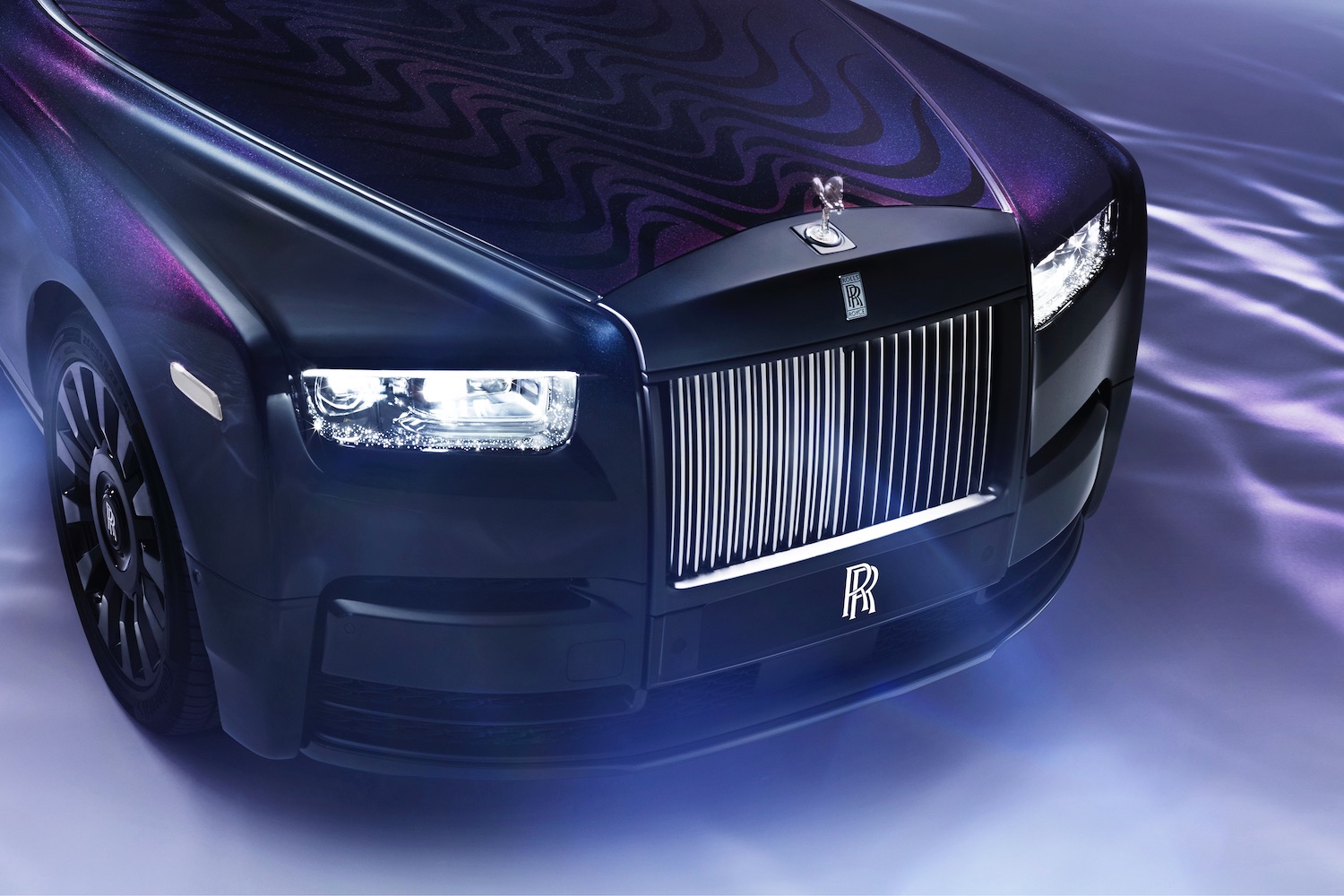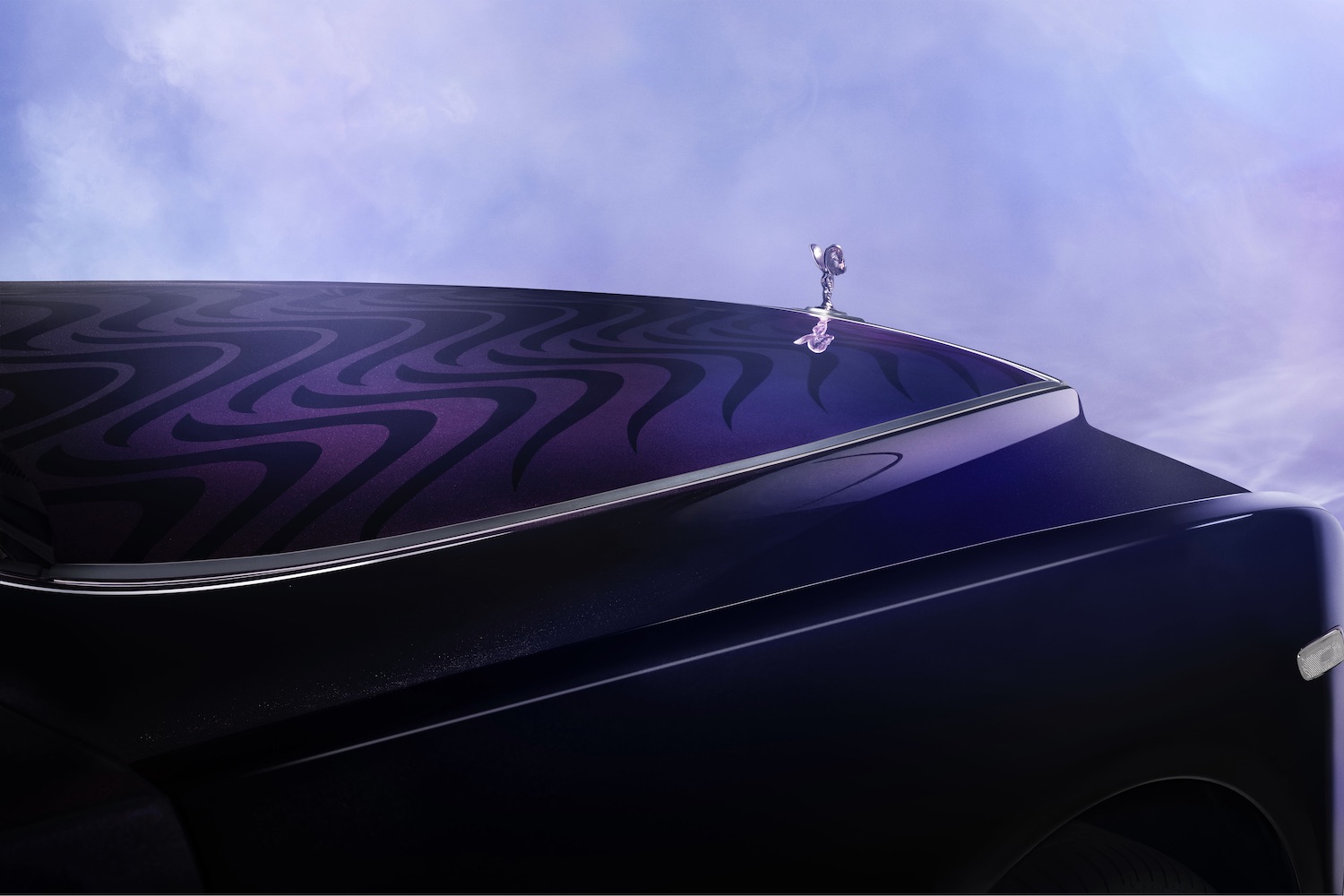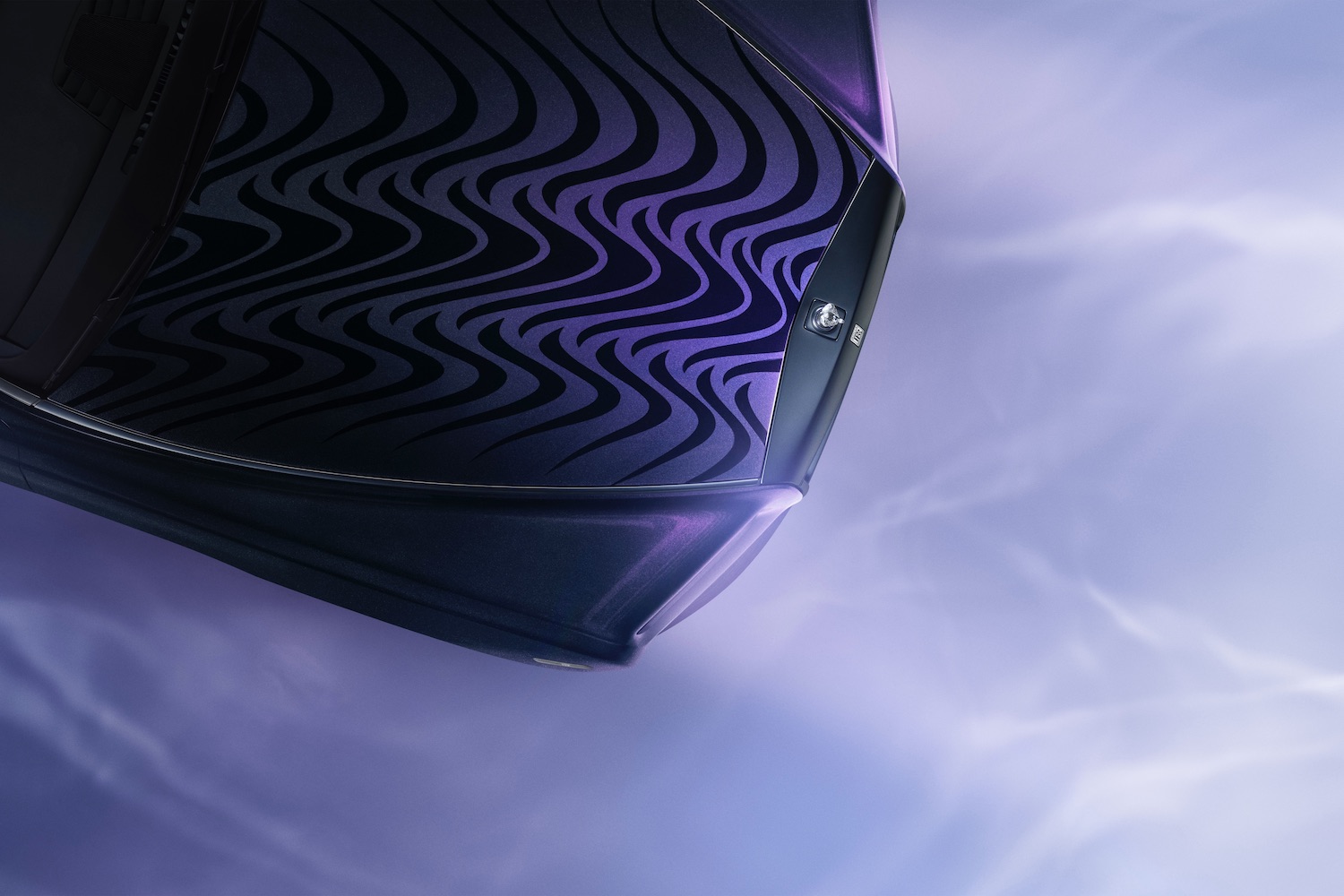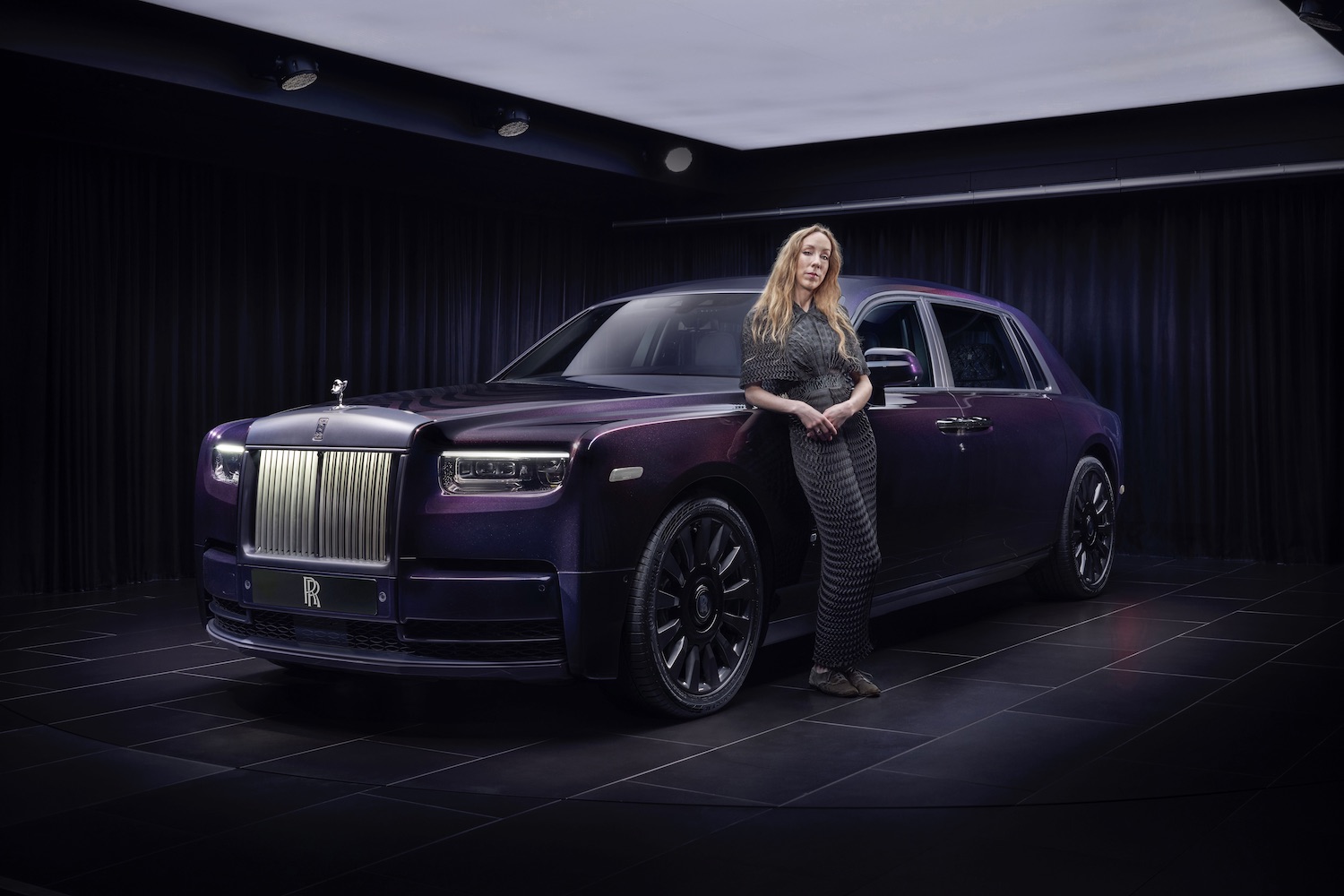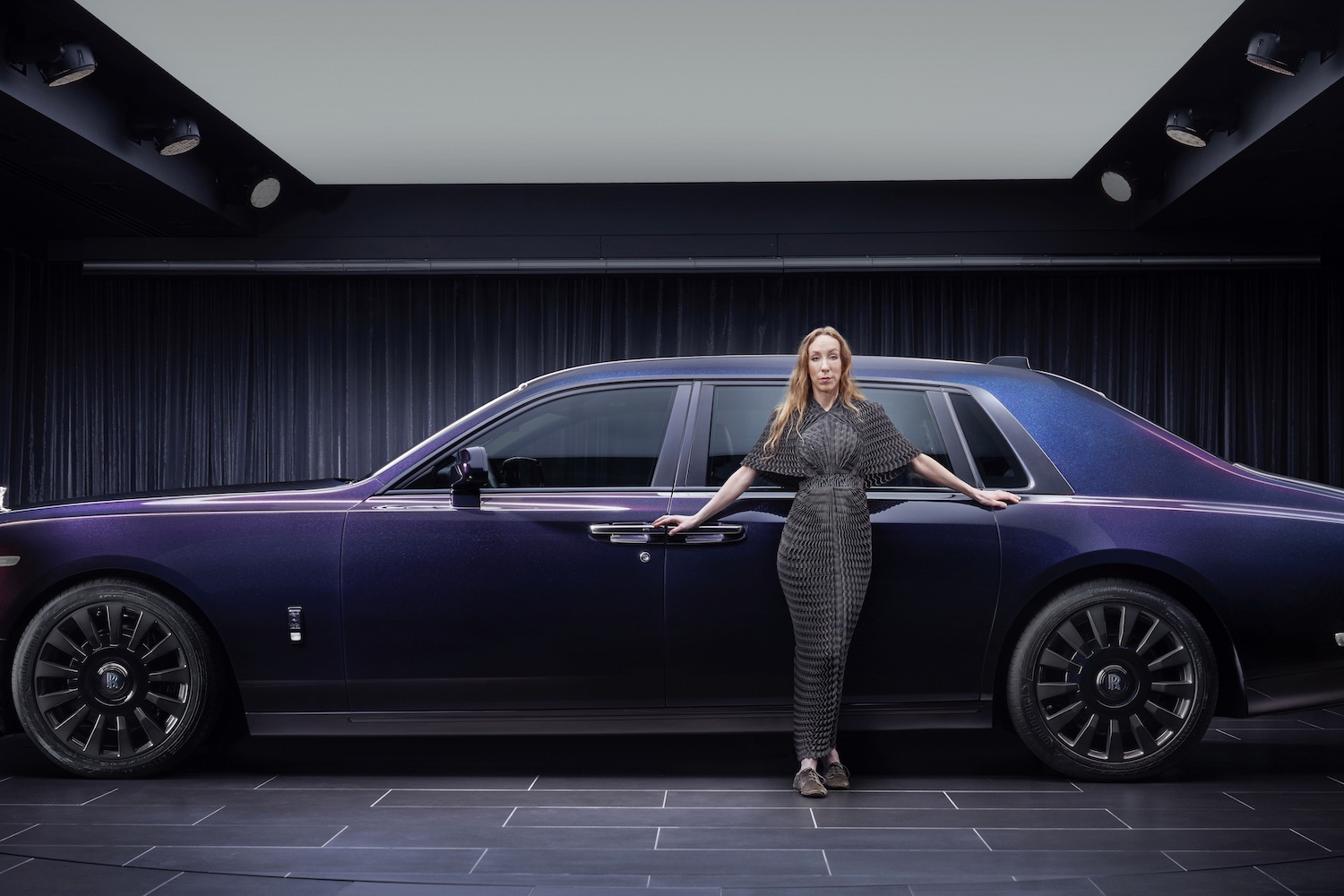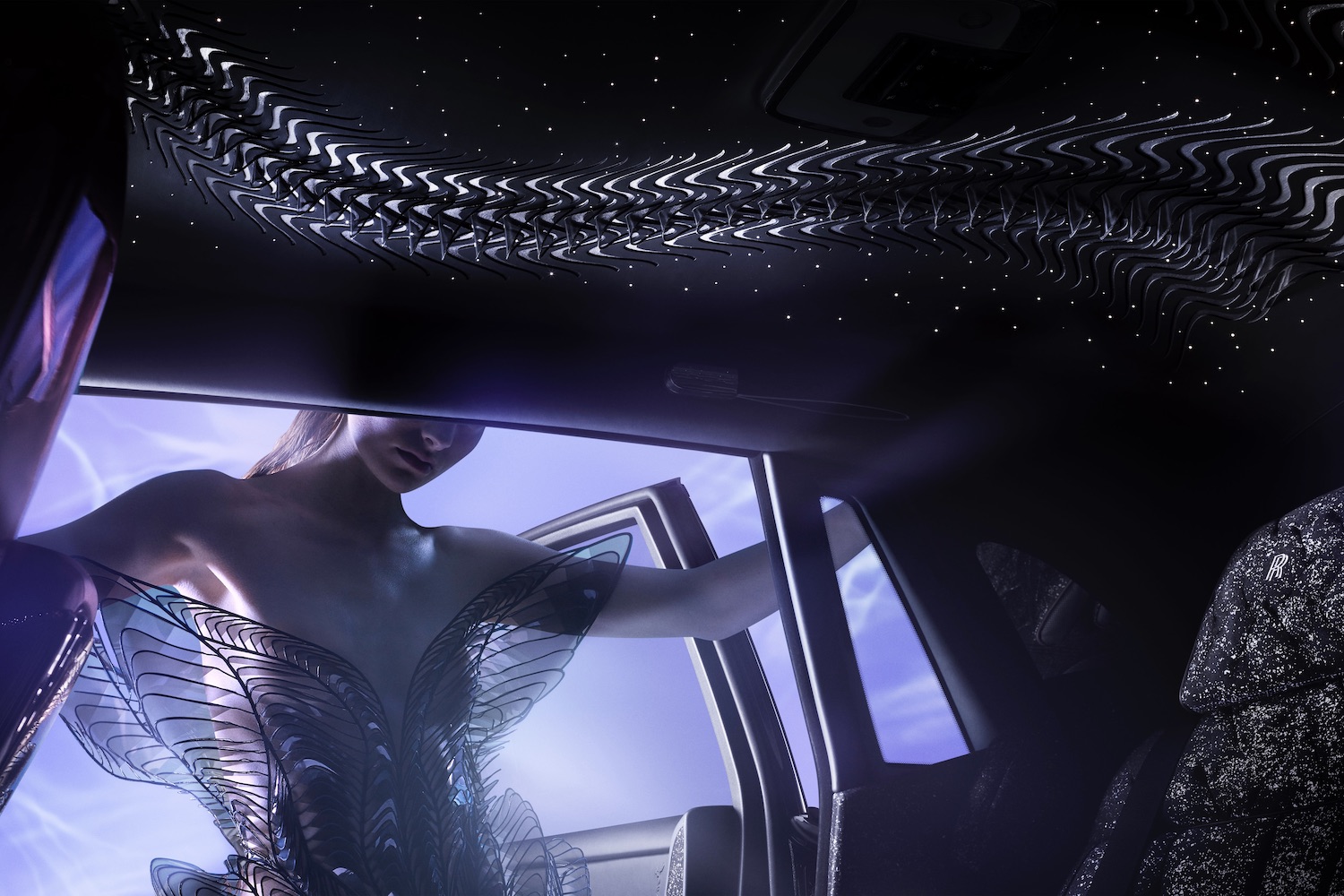Amid the electric vehicle revolution and the introduction of more semi-autonomous technology, automakers are eager to change their bios from traditional automakers to tech companies. Rolls-Royce, well, Rolls-Royce is different. While the iconic British marque has introduced its first EV with the Spectre, Rolls-Royce really does expand its reach beyond the world of cars as a luxury marque. Case in point, the latest vehicle from Rolls-Royce is the Phantom Syntopia. It was made in collaboration with Dutch fashion designer Iris van Herpen and blends the worlds of high fashion and cars.
You may not think that fashion and cars belong together, but the Syntopia certainly makes a case for more collaboration across the two industries. The Syntopia is very purple and is inspired by the concept of “weaving water.” The automaker, which has created some stunning vehicles over its extensive history, calls the Syntopia a “bespoke masterpiece.” Heavy words from a brand that’s known for going above and beyond with some of the most bespoke vehicles on sale. But we believe the company certainly went to great lengths to make the Syntopia, seeing as how it took Rolls-Royce four years to perfect.
If you’re looking at the Syntopia and are finding yourself wondering what makes the version of the Phantom so special, the list is long enough to warrant its own catalog. Starting with the outside, fans or purple will notice the car’s exquisite paint scheme. The body is finished in iridescent liquid noir paint that, depending on the amount of light that’s shining down, reveals shades of blue, gold, purple, and magenta. If you manage to get an overhead view of the hood, you’ll notice a shimmering water pattern that’s painted directly onto the hood. The paint alone for the car took several months to get right and required more than 3,000 hours of testing.
The Syntopia’s paint job is stunning, but the interior is what really makes it remarkable. The headliner is nothing short of spectacular and makes the automaker’s starlight headliner look like an Ikea special. The Weaving Water Starlight Headliner is made of a single piece of leather, which was chosen from more than 1,000 hides available, that features a 3D design thanks to woven nylon fabric that’s positioned underneath the leather. To top things off, the 3D design is fitted with 162 “delicate petals made of glass organza.” Of course, Rolls-Royce also included 1,000 fiber-optic lights, or stars. Rolls-Royce claims that the headliner took roughly 700 hours to complete.
Rolls-Royce and van Herpen fitted the front seats with Magic Grey Leather, the rear seats with a special silk-blend fabric, and utilized interior materials that were made by the automaker’s Rolls-Royce Bespoke Collective and van Herpen’s team. The Syntopia’s weaving water theme can also be found on the passenger panel and tables. What really takes the Syntopia to another level is that the car has its own scent. That’s right, this is the first Rolls-Royce to have its own bespoke smell that’s piped into the vehicle through the headrests. The scent reportedly includes hints of leather, cedarwood, rose, lemon, and iris.
With Rolls-Royce and van Herpen’s team going to such great lengths to create the Syntopia, one would expect the vehicle to be a highly limited model. You’d be right. The Syntopia is truly one of a kind, because Rolls-Royce only made one model. The extremely well-off buyer will be taking delivery of the vehicle later this May. Rolls-Royce has already stated that it will never replicate the Syntopia, giving the owner an immediate collector’s item.
